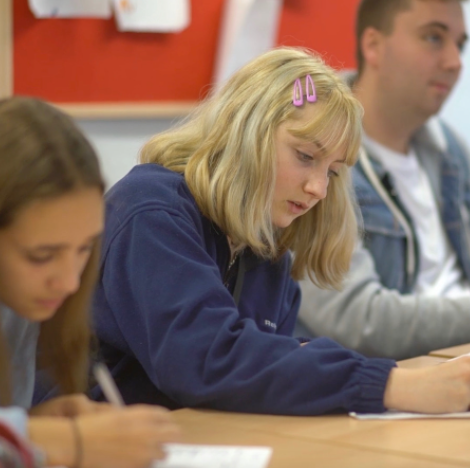The average class size in mainstream UK schools has been dramatically increasing for years.
In 2020 this figure was the highest in the last 19 years with the average class size hitting 22. This rise was mirrored by the average size of a secondary school increasing by 2% to 986 pupils. Schools don’t necessarily have the resources and funding available to cater to the rising class sizes, therefore rising figures may negatively impact student’s quality of education. Many parents may be asking what the significance of this rise is for their child and the impact on their education. This is why Bath Academy prides itself on being able to offer small, personal and supportive learning environments for all students due to the proven benefits discussed below:
Tailored Classes
In small classes, the teacher has the time and ability to cater to individual students ensuring that nobody is left behind or struggling to keep up with the content. In a class of over 25 students, it has been scientifically confirmed that the teacher teaches to the lower middle standard, meaning that any student on either side of this is unable to fulfil their maximum potential. Teachers at the front of a small class have the ability to get to know every student this, in turn, allows them to assess them as individuals analysing their learning styles, enhancing learning further. Teachers also have more time to provide individualised feedback, ensuring a continuous communication loop allowing students to acknowledge areas from improvements and development.
Better Academic Results
A study conducted in Eastern Europe found that class size was associated with greater academic achievement in maths, physics, chemistry, and Earth science, as well as greater maths enjoyment. A personalised and open environment is universally expected to ensure greater levels of academic performance due to the higher levels of student engagement and participation.
The National Council of Teachers of English confirmed this stating ‘Overall, research shows that students in smaller classes perform better in all subjects and on all assessments when compared to their peers in larger classes. In smaller classes, students tend to be as much as one to two months ahead in content knowledge, and they score higher on standardized assessments’
Quieter and more Focussed Classes
Naturally, there is a direct correlation between the number of students within a class and the general noise levels. This then results in the teacher needing to reduce these noise levels to create an effective learning space, which can often eat into teaching time. By increasing the number of students, it also increases distractions within the class, often resulting in the loss of focus. With fewer students in the class, it creates a more open and less daunting environment to participate in discussions and to express their personal opinions. Not only does this assist the student in growing their confidence during pivotal formative years, but it also helps to enrich the learning environment.
Small Class Sizes at Bath Academy
Classes at Bath Academy are small and personalised, sometimes 1:1 to ensure that all students reach their full potential due to the points raised above. No academic class has more than 8 students and the average class size is 3, a stark difference from the growing UK average of 22. Teachers are there to support students at all stages of their educational journeys, from careful questioning, regular assessments, and follow-ups. This enables students to be able to direct their learning focus and identify areas for improvement. If you would like to learn more about Bath Academy’s tailored teaching style, please contact info@bathacademy.co.uk


